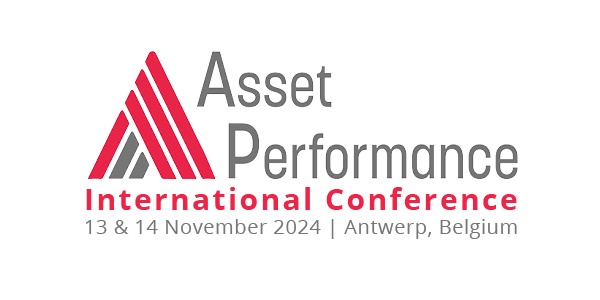Post-Conference Programme
Several webinars are organised on our Online Platform which you can watch live or re-watch afterwards on the moment that suits you best.
Participants of Asset Performance 2023 can watch these recordings for free on the Asset Performance Platform. Login here.
Discover the scheduled webinars below.
Webinar: How data analysis can help in identification and quantification of improvement opportunities. Case on: Quarto cold rolling mill production processes
21 May 2024 at 11 h. on the BEMAS Online Learning Platform
Operators of the cold rolling mill face many challenges in their day-to-day operations. Determining the "ideal" process parameters for each product family proves to be a complex task due to the diverse range of raw and finished products, as well as the considerable number of (measured) parameters contributing to this complexity. While operators have overall indicators to gauge performance, these do not provide sufficiently detailed information to measure the specific performance for each product family. This gap hinders the identification of optimal parameters and the exploration of potential optimization strategies for each product category, a critical consideration in a highly competitive industrial landscape.
Manual analysis of parameters for each product family is not feasible due to its excessively time-consuming nature. As a result, operational decisions continue to heavily rely on the experience of operators, leading to significant variability in process performance.
These intricate challenges will be (thoroughly) explored during the webinar, with a particular focus on practical solutions to overcome these hurdles and enhance operational efficiency while accommodating the diversity of products to be processed.
In response to the complex challenges, the proposed approach relies on cloud-based (online) monitoring and analysis solutions. These solutions facilitate the acquisition, consolidation, and analysis of extensive datasets, providing a comprehensive overview of the operational landscape of the rolling mill.
These cloud solutions not only ensure scalability but also facilitate “real-time” access to information, allowing operators to have up-to-date insights crucial for informed decision-making.
Next, our approach emphasizes the identification of relevant indicators through nuanced analysis that combines expertise in data science with a deep understanding of the operations of these rolling mills and their processes. By merging analytical methodologies with domain-specific knowledge, we aim to pinpoint key performance indicators that go beyond traditional measures, offering a more granular and insightful view of operational efficiency for each product family.
Through this holistic approach, we aspire to go beyond the limitations of conventional performance indicators and manual analyses.
Webinar: Waves of Insight from Data to AI for optimizing operations
by Damiaan Zwietering, Sales Engineer Data & AI at IBM
Recording available on the Asset Performance Platform. Login here.
We have been using data to optimize operations in asset management for years and every now and then a new wave of technology comes along that improves your insight and enables even better streamlining. To understand the implications of the most recent wave of Generative AI, we place it in the historical context of reporting, statistics and machine learning. This will help you understand what it could mean for your organization and enable you to take the right steps in adopting this new technology.
Examples which will be explained during this presentation are:
Failure Mode Context Understanding
Identify common failure points and paths to failure for new assets to improve predictive maintenance and reliability programs
Challenges include:
- Understanding how assets fail is crucial in providing preventative maintenance and reducing asset downtime.
- Failure Mode and Effects Analysis provides key insights into this area.
- However, FMEA data is not available for many different kinds of assets and it can take time to acquire
Benefits:
- Reduced time to value for asset classes where we have less experience
- More accurate failure assessments and preventative maintenance plans
- Automated creation of maintenance strategies for new assets & clients
Work Order Intelligence
Automatically identify and correct inaccurate failure codes in Asset Management work orders.
Challenges include:
- Understanding why a work order was created is key in finding patterns and in optimizing operations
- The collection of failure mode information in work orders is typically manual and very error prone.
- Clients often do not collect data for all of their asset classes and it can take a significant amount of time to build up an adequate history of failure data
Benefits:
- Dramatically reduce the effort required to capture and maintain accurate failure code data
- Better understanding of the patterns of failures and potential problem parts
- Automatic approval of typical workorders enabling technicians to focus on solving the problems
Scope 3 GHG Emissions Estimation
Understand your carbon footprint by leveraging the power of generative AI to get more accurate estimates of Scope 3 emissions.
Challenges include:
- Companies make estimates of their Scope 3 emissions based on data shared from their trading partners
- Many suppliers do not measure their emissions or if they do may not be open to sharing based on contractual or IP considerations
- While there is guidance on standardized reporting formats from the GHG Protocol, there is significant variance in the metrics and calculations that companies use
- Collecting the data and calculating the metrics is resource-intensive requiring specialized expertise
Benefits:
- Significantly more accurate estimates of their actual Scope 3 emissions
- Tractable and auditable reporting for Scope 3
- Dramatic reduction in effort and expertise required for fulfill business and regulatory requirements
About the speaker
Damiaan Zwietering is an IBM specialist who dedicates his career to achieving real world results innovating with information. He was a developer, consultant, architect and developer advocate in the area of data warehousing, business intelligence and advanced analytics before his current position as a sales engineer for Data & AI, specializing in the responsible application of machine learning and artificial intelligence.
